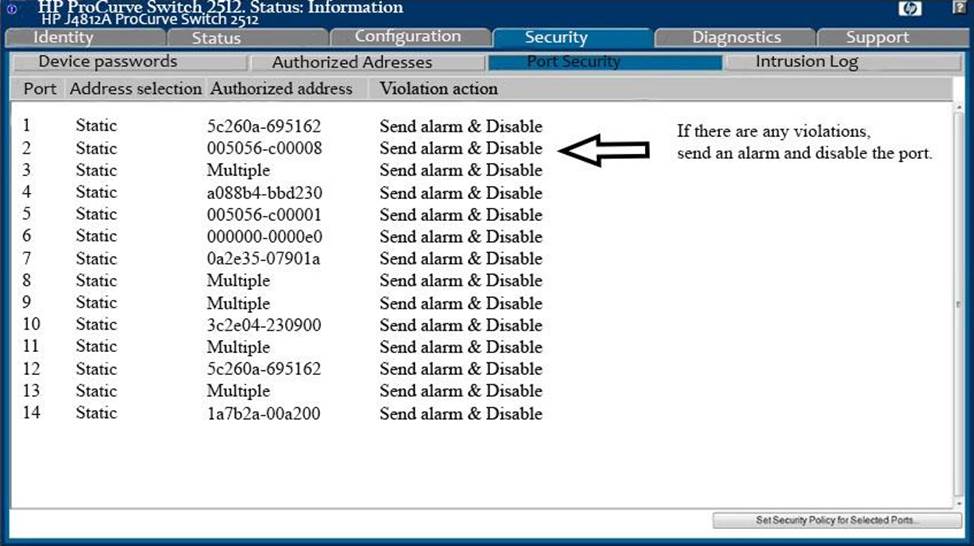GIAC GCED GIAC Certified Enterprise Defender Online Training
GIAC GCED Online Training
The questions for GCED were last updated at Dec 31,2025.
- Exam Code: GCED
- Exam Name: GIAC Certified Enterprise Defender
- Certification Provider: GIAC
- Latest update: Dec 31,2025
Which type of media should the IR team be handling as they seek to understand the root cause of an incident?
- A . Restored media from full backup of the infected host
- B . Media from the infected host, copied to the dedicated IR host
- C . Original media from the infected host
- D . Bit-for-bit image from the infected host
An incident response team is handling a worm infection among their user workstations. They created an IPS signature to detect and block worm activity on the border IPS, then removed the worm’s artifacts or workstations triggering the rule. Despite this action, worm activity continued for days after. Where did the incident response team fail?
- A . The team did not adequately apply lessons learned from the incident
- B . The custom rule did not detect all infected workstations
- C . They did not receive timely notification of the security event
- D . The team did not understand the worm’s propagation method
A legacy server on the network was breached through an OS vulnerability with no patch available. The server is used only rarely by employees across several business units. The theft of information from the server goes unnoticed until the company is notified by a third party that sensitive information has been posted on the Internet.
Which control was the first to fail?
- A . Security awareness
- B . Access control
- C . Data classification
- D . Incident response
Analyze the screenshot below.

Which of the following attacks can be mitigated by these configuration settings?
- A . A Denial-of-Service attack using network broadcasts
- B . A Replay attack
- C . An IP masquerading attack
- D . A MAC Flood attack
Of the following pieces of digital evidence, which would be collected FIRST from a live system involved in an incident?
- A . Event logs from a central repository
- B . Directory listing of system files
- C . Media in the CDrom drive
- D . Swap space and page files
Which of the following attacks would use “..” notation as part of a web request to access restricted files and directories, and possibly execute code on the web server?
- A . URL directory
- B . HTTP header attack
- C . SQL injection
- D . IDS evasion
- E . Cross site scripting
At the start of an investigation on a Windows system, the lead handler executes the following commands after inserting a USB drive.
What is the purpose of this command?
C: >dir / s / a dhsra d: > a: IRCD.txt
- A . To create a file on the USB drive that contains a listing of the C: drive
- B . To show hidden and archived files on the C: drive and copy them to the USB drive
- C . To copy a forensic image of the local C: drive onto the USB drive
- D . To compare a list of known good hashes on the USB drive to files on the local C: drive
Why might an administrator not be able to delete a file using the Windows del command without specifying additional command line switches?
- A . Because it has the read-only attribute set
- B . Because it is encrypted
- C . Because it has the nodel attribute set
- D . Because it is an executable file
Why would the pass action be used in a Snort configuration file?
- A . The pass action simplifies some filtering by specifying what to ignore.
- B . The pass action passes the packet onto further rules for immediate analysis.
- C . The pass action serves as a placeholder in the snort configuration file for future rule updates.
- D . Using the pass action allows a packet to be passed to an external process.
- E . The pass action increases the number of false positives, better testing the rules.
On which layer of the OSI Reference Model does the FWSnort utility function?
- A . Physical Layer
- B . Data Link Layer
- C . Transport Layer
- D . Session Layer
- E . Application Layer
Latest GCED Dumps Valid Version with 88 Q&As
Latest And Valid Q&A | Instant Download | Once Fail, Full Refund

